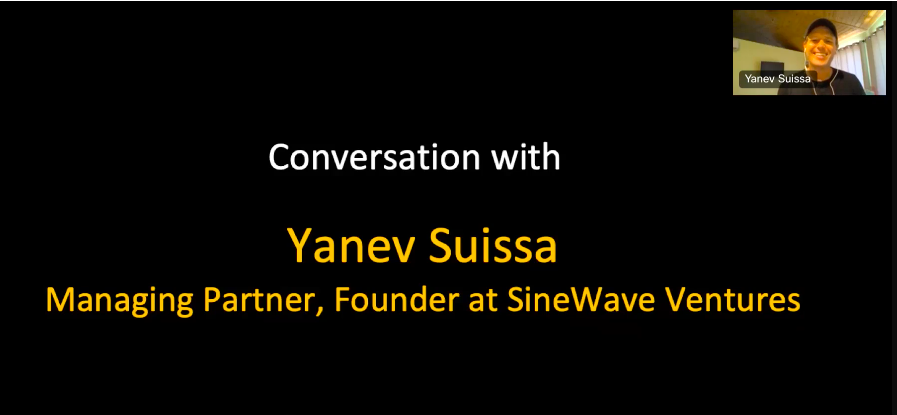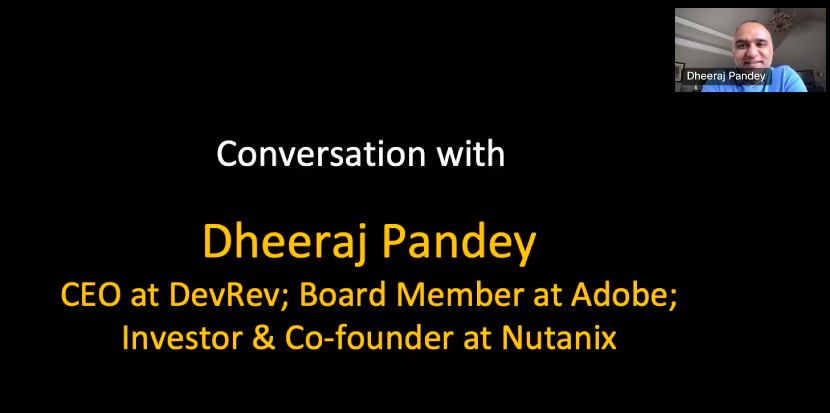Seed Capital
1Mby1M Virtual Accelerator Investor Forum: With Mohanjit Jolly, Partner at Iron Pillar (Part 1)

Mohanjit Jolly, Partner at Iron Pillar, and a long-time player in the Indian startup ecosystem discusses Exit options for Indian startups and other topics.
Sramana Mitra: I know you’ve been in the industry for a very long time and have been following the evolution of the Indian venture capital ecosystem for a long time. Let’s start diving into a bit of your background. Then let’s introduce Iron Pillar.
>>>588th 1Mby1M Entrepreneurship Podcast with Yanev Suissa, SineWave Ventures
Yanev Suissa, Managing Partner and Founder at SineWave Ventures, discusses his firm’s successes as well as investment thesis. Vertical Cloud is one of the key ones with an emphasis on Enterprise Data Platforms.
Podcast: Play in new window | Download
Subscribe: Apple Podcasts | Android | Google Play | Stitcher | TuneIn | RSS
588th Roundtable Recording with Yanev Suissa, SineWave Ventures
In case you missed it, you can listen to the recording of this roundtable here:
Roundtable Recap: September 1 – More on Vertical Cloud Investment Thesis

During this week’s roundtable, we had as our guest Yanev Suissa, Managing Partner and Founder at SineWave Ventures. Yanev discussed his firm’s successes as well as investment thesis. Vertical Cloud is one of the key ones with an emphasis on Enterprise Data Platforms.
You can listen to the recording of this roundtable here:
587th 1Mby1M Entrepreneurship Podcast with Dheeraj Pandey, Nutanix
Dheeraj Pandey, founder of Nutanix and DevRev. The conversation spans a variety of topics and has some brilliant insights on the gaps in the tech industry.
Podcast: Play in new window | Download
Subscribe: Apple Podcasts | Android | Google Play | Stitcher | TuneIn | RSS
587th Roundtable Recording with Dheeraj Pandey
In case you missed it, you can listen to the recording here:
Roundtable Recap: August 25 – Open Problems in Data and Design with Dheeraj Pandey

During this week’s roundtable, we had as our guest Dheeraj Pandey, founder of Nutanix and DevRev. The conversation spans a variety of topics and has some brilliant insights on the gaps in the tech industry.
HOP into Homecare
For our entrepreneur pitch, we had Monika Virk from Aldie, Virginia, pitching HOP into Homecare.
You can listen to the recording of this roundtable here:
1Mby1M Virtual Accelerator Investor Forum: With Pawel Maj, Investment Director at Warsaw Equity Group (Part 4)
Sramana Mitra: We are big fans of capital-efficient businesses that are not necessarily chasing unicorns. Partly, the problem I have with this unicorn chasing is flushing these companies with too much capital. Then the exit bar is so high that companies end up in this twilight zone where they’re burning too much cash, can’t raise more money, and can’t find an exit because the valuation requirements are too high to have a profitable exit.
I’m pleased to hear that you are acknowledging that there are other ways of building businesses. Now there is a question though. How much exit capacity exists in the region? If there are 5,000 to 10,000 startups, how do you think this is going to play out?
>>>